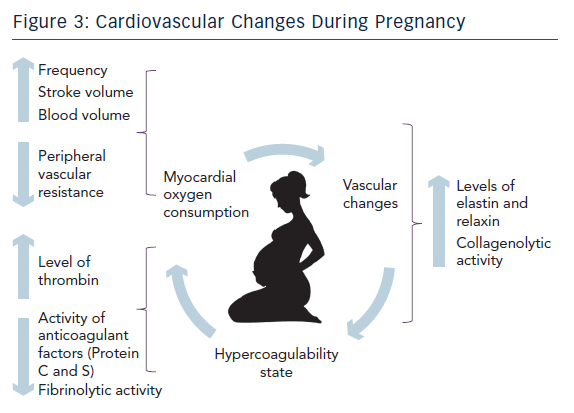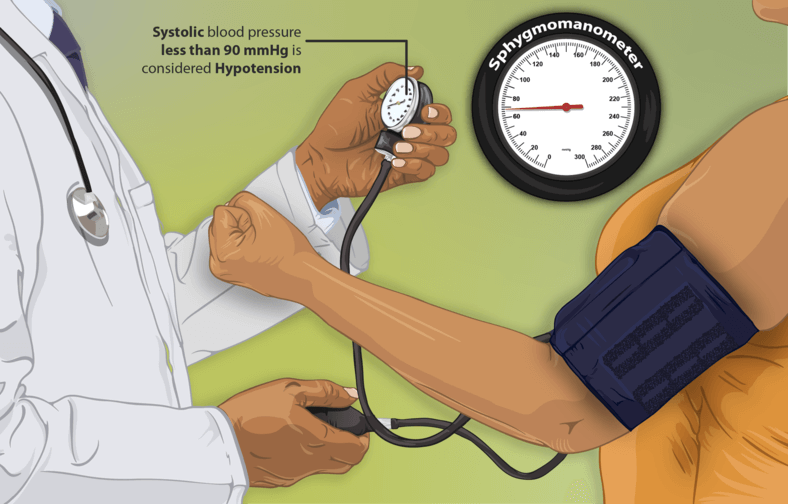Cardiovascular Changes in Pregnancy
- The cardiovascular system undergoes significant changes to meet the increased metabolic demands of pregnancy and to ensure adequate blood supply to the uterus and placenta
- The main cardiovascular changes include:
- Increased cardiac output: The amount of blood pumped by the heart per minute increases by 30% to 50% during pregnancy. This is due to increased stroke volume (the amount of blood pumped by the heart per beat) and increased heart rate (the number of beats per minute). The cardiac output peaks at 24 to 28 weeks of gestation and then declines slightly until term. The normal range of cardiac output in pregnancy is 4.5 to 6.5 L/min.
- Increased blood volume: The total amount of blood in the body increases by 40% to 50% during pregnancy. This is due to increased plasma volume (the liquid part of the blood) and increased red blood cell mass (the solid part of the blood). The plasma volume increases more than the red blood cell mass, resulting in a physiological anemia or hemodilution (a decrease in the concentration of hemoglobin and hematocrit). The normal range of hemoglobin in pregnancy is 11 to 14 g/dL and the normal range of hematocrit is 33% to 39%.
- Decreased blood pressure: The average blood pressure decreases by 10 mmHg during pregnancy. This is due to decreased peripheral vascular resistance (the resistance of the blood vessels to the flow of blood) caused by hormonal relaxation of smooth muscle and vasodilation (widening of blood vessels). The blood pressure reaches its lowest point at mid-pregnancy and then returns to pre-pregnancy levels by term. The normal range of blood pressure in pregnancy is less than 140/90 mmHg.
-
- Increased venous pressure: The pressure in the veins increases during pregnancy due to compression of the inferior vena cava (the large vein that carries blood from the lower body to the heart) by the gravid uterus (the enlarged uterus containing the fetus) and decreased venous tone (the elasticity of the veins). This leads to venous stasis (slowing or pooling of blood in the veins) and edema (swelling) of the lower extremities, vulva, and hemorrhoids. The risk of venous thromboembolism (blood clot formation in the veins) also increases during pregnancy due to hypercoagulability (increased tendency of blood to clot) caused by hormonal and fibrinolytic (clot-dissolving) changes.



Nursing Test Bank
Quiz #1: RN Exams Pharmacology Exams
Quiz #2: RN Exams Medical-Surgical Exams
Quiz #3: RN Exams Fundamentals Exams
Quiz #4: RN Exams Maternal-Newborn Exams
Quiz #5: RN Exams Anatomy and Physiology Exams
Quiz #6: RN Exams Obstetrics and Pediatrics Exams
Quiz #7: RN Exams Fluid and Electrolytes Exams
Quiz #8: RN Exams Community Health Exams
Quiz #9: RN Exams Promoting Health across the lifespan Exams
Quiz #10: RN Exams Multidimensional care Exams
Naxlex Comprehensive Predictor Exams
Quiz #1: Naxlex RN Comprehensive online practice 2019 B with NGN
Quiz #2: Naxlex RN Comprehensive Predictor 2023
Quiz #3: Naxlex RN Comprehensive Predictor 2023 Exit Exam A
Quiz #4: Naxlex HESI Exit LPN Exam
Quiz #5: Naxlex PN Comprehensive Predictor PN 2020
Quiz #6: Naxlex VATI PN Comprehensive Predictor 2020
Quiz #8: Naxlex PN Comprehensive Predictor 2023 - Exam 1
Quiz #10: Naxlex HESI PN Exit exam
Quiz #11: Naxlex HESI PN EXIT Exam 2
Questions on Cardiovascular Changes in Pregnancy
Correct Answer is C
Explanation
Venous pressure increases during pregnancy due to increased blood volume and compression of the inferior vena cava by the gravid uterus.
This can lead to lower extremity edema and varicose veins.
Correct Answer is A
Explanation
These levels are not abnormal enough to indicate hemolysis, which is a destruction of red blood cells. Hemolysis can cause severe anemia and jaundice in pregnancy and may be associated with infections, autoimmune disorders, or blood transfusions.
Increase in pressure on the diaphragm would not affect the blood pressure directly.
The diaphragm is a muscle that helps with breathing, not with circulation.
Human chorionic gonadotropin (hCG) is not directly involved in joint laxity, although it does have other effects on the musculoskeletal system, such as stimulating thyroid function and increasing fluid retention.
Search Here
Related Topics
- Hypoglycemia - Physiological And Physical Changes In Pregnancy
- Preterm birth - Physiological And Physical Changes In Pregnancy
- Macrosomia - Physiological And Physical Changes In Pregnancy
- Post-term birth - Physiological And Physical Changes In Pregnancy
- Hyperbilirubinemia - Physiological And Physical Changes In Pregnancy
- Cardiovascular Changes in Pregnancy - Physiological And Physical Changes In Pregnancy
More on Nursing
Free Nursing Study Materials
Access to all study guides and practice questions for nursing for free.
- Free Nursing Study Trials
- Free Nursing Video tutorials
- Free Nursing Practice Tests
- Free Exam and Study Modes
- Free Nursing Revision Quizlets
